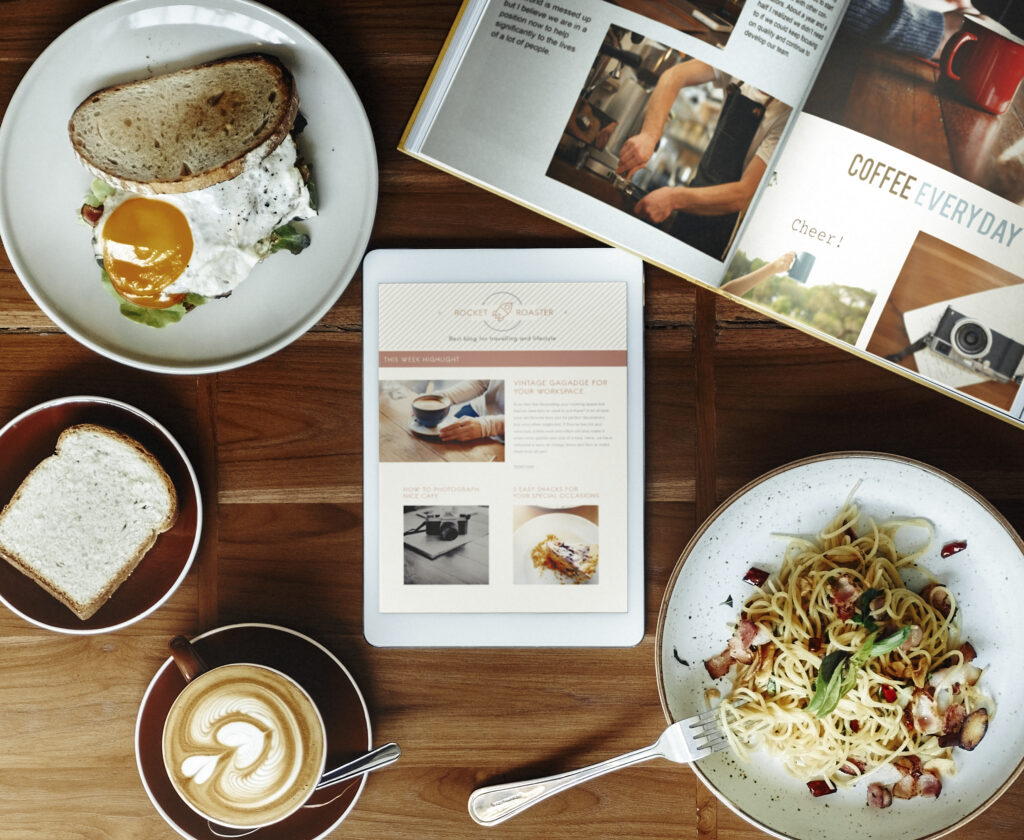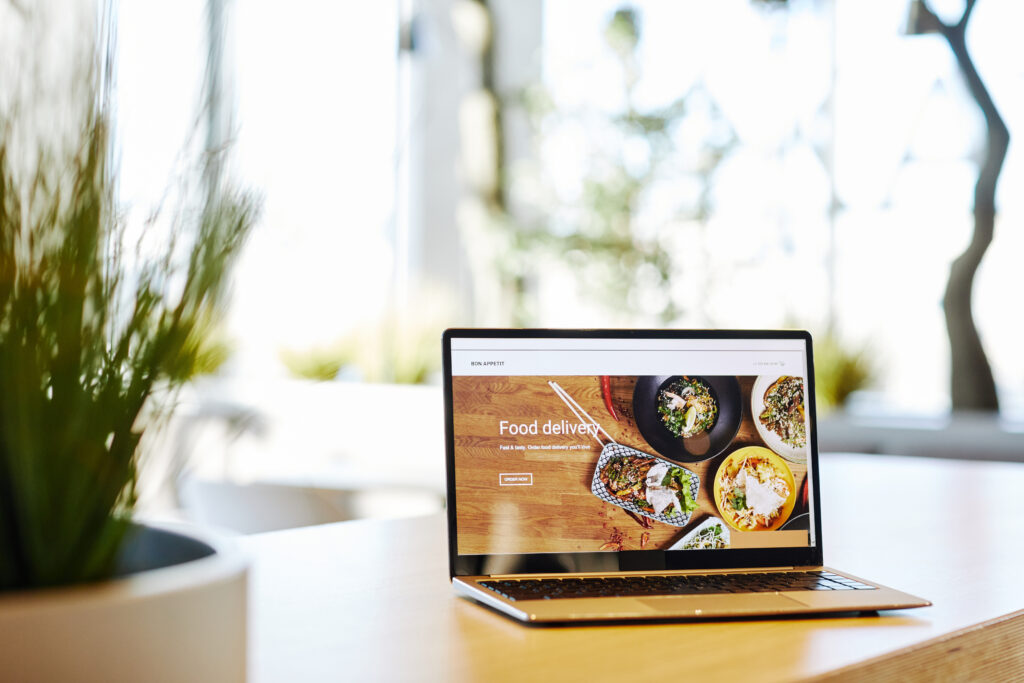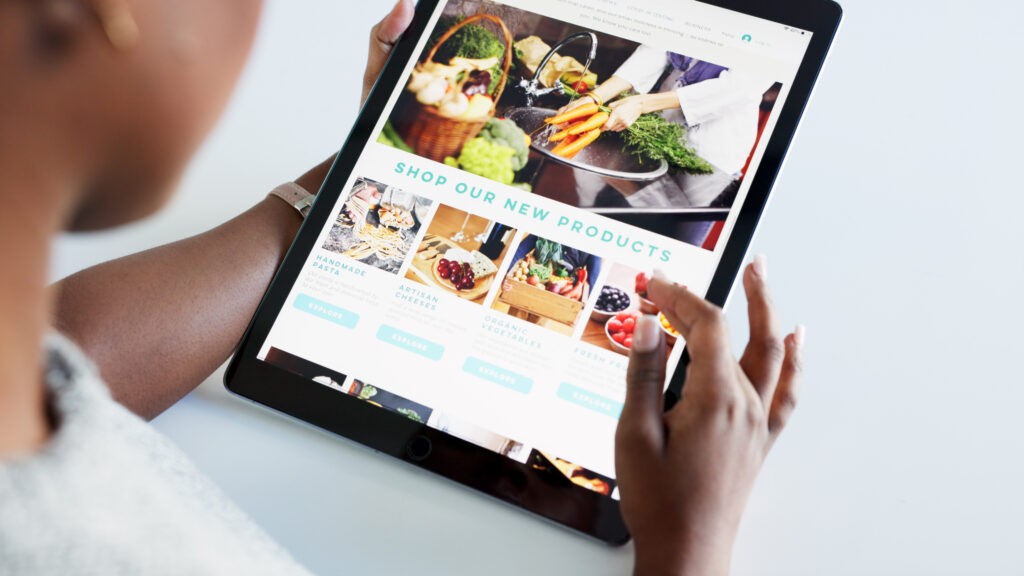How to Master Food Website Design and Skyrocket Your Traffic

Mastering food website design is a game-changer for any food business looking to captivate visitors and drive traffic. Imagine this: a potential customer searches for a recipe, a restaurant, or a gourmet product, and your visually stunning, user-friendly website is their first impression. Will it keep them engaged or push them to look elsewhere?
This article dives into the essentials of effective food website design, exploring key elements like mobile optimization, SEO best practices, and high-quality visuals. Whether you’re a food blogger, restaurant owner, or online retailer, you’ll discover actionable tips to make your website not only look great but also perform exceptionally.
Keep reading to learn how to transform your food website into a traffic-driving machine that delights visitors and converts them into loyal customers.
Why Food Website Design Matters
A well-designed website does more than look good—it creates a seamless user experience that turns visitors into loyal customers. For food businesses, the stakes are even higher. Your website must:
- Entice Visitors: High-quality visuals should showcase your food in the most appealing way possible.
- Build Trust: A professional design conveys credibility, making visitors more likely to order or engage with your brand.
- Improve Navigation: A user-friendly interface ensures visitors can quickly find what they’re looking for, whether it’s a menu, recipe, or product.
Statistics show that 38% of users will leave a website if the content or layout is unattractive, emphasizing the importance of nailing your design.
Key Elements of a Successful Food Website

Stunning Visuals
Food is a sensory experience, and your website should replicate that visually. Use professional, high-resolution images to captivate visitors.
Clear Navigation
Ensure your menu is simple, intuitive, and easy to navigate. Categorize content logically—think menus, recipes, or product collections.
Fast Loading Speed
A slow website can turn visitors away. Optimize images, minimize code, and use a reliable hosting service to keep your site lightning-fast.
Engaging Calls-to-Action
Guide users toward specific actions, such as ordering online, subscribing to a newsletter, or exploring recipes.
Brand Consistency
From color schemes to fonts, your website should reflect your brand identity, creating a cohesive experience.
How to Optimize Your Website for User Experience
Simplify Navigation
- Use drop-down menus for easy access to categories.
- Include a search bar for users to find specific items quickly.
Prioritize Readability
- Use large, easy-to-read fonts.
- Break up text with headings and bullet points.
Enhance Accessibility
- Ensure your website is accessible to all users by including alt text for images and enabling keyboard navigation.
Include Clear Contact Information
- Make it easy for visitors to reach you with a visible contact page, phone number, or live chat option.
Best Practices for Mobile-Friendly Food Websites
With over 50% of web traffic coming from mobile devices, ensuring your site is mobile-friendly is essential.
Use Responsive Design
Your website should adjust seamlessly to different screen sizes, providing an optimal experience on smartphones and tablets.
Simplify Forms
Shorten order or subscription forms for easy mobile use.
Prioritize Speed
Mobile users expect fast-loading pages. Optimize images and reduce unnecessary plugins to improve performance.
SEO Tips for Boosting Your Food Website’s Visibility
A beautifully designed website is useless if no one sees it. Use these SEO strategies to increase your site’s visibility:
Optimize Keywords
Incorporate keywords like food website design, recipes, or local dining into your content naturally.
Create Quality Content
Regularly update your blog with relevant topics such as cooking tips, seasonal menus, or food trends.
Use Schema Markup
Structured data helps search engines understand your content, improving your chances of appearing in rich snippets.
Focus on Local SEO
If you’re a restaurant, optimize for local searches by including your location, operating hours, and reviews.
The Role of High-Quality Imagery in Food Website Design

Invest in Professional Photography
Poor-quality images can hurt your credibility. Hire a professional photographer to capture your dishes, products, or space.
Use Visual Hierarchy
Feature your best dishes or products prominently on the homepage.
Incorporate Videos
Short videos, such as behind-the-scenes kitchen footage or recipe tutorials, can boost engagement.
Integrating Social Media and Engagement Features
Social media is a powerful tool for driving traffic to your website. Here’s how to integrate it effectively:
Add Social Media Buttons
Include links to your social media profiles on your homepage and blog posts.
Encourage Sharing
Add shareable buttons to recipes, menus, or blog content to increase visibility.
Display User-Generated Content
Showcase Instagram photos or reviews from satisfied customers directly on your site.
Common Mistakes to Avoid in Food Website Design
Overloading the Homepage
Keep the design clean and uncluttered. Avoid overwhelming visitors with too much information at once.
Ignoring Mobile Optimization
A desktop-only design alienates mobile users. Test your site on various devices to ensure compatibility.
Neglecting Updates
Outdated content or broken links can hurt your SEO and credibility. Regularly refresh your site to keep it current.
Skipping Analytics
Track your site’s performance with tools like Google Analytics to identify what’s working and what needs improvement.
Takeaways
Crafting an exceptional food website design is no longer just about aesthetics; it’s about creating an engaging, user-friendly platform that reflects your brand’s identity and meets your audience’s needs. From leveraging high-quality visuals and intuitive navigation to optimizing for SEO and mobile devices, every element plays a critical role in driving traffic and enhancing user experience. By understanding and applying these principles, you not only captivate visitors but also establish your brand as a trusted authority in the competitive food industry. A well-designed food website is a powerful tool to convert casual visitors into loyal customers.
Looking ahead, as technology and user expectations evolve, staying updated with emerging trends in food website design will be essential for long-term success. Features like interactive content, immersive videos, and seamless social media integration are poised to become even more significant. We encourage you to reflect on your own website—what’s working, and what could be improved? Share your thoughts or experiences in the comments below; let’s start a conversation and learn from one another to create truly outstanding food websites.
Elevate Your Food Website Today
Your website is your brand’s digital identity. Whether you’re a restaurant, food blogger, or gourmet retailer, mastering food website design is the key to attracting visitors, keeping them engaged, and converting them into loyal customers.
Take your online presence to the next level—start optimizing your food website today and watch your traffic skyrocket!


